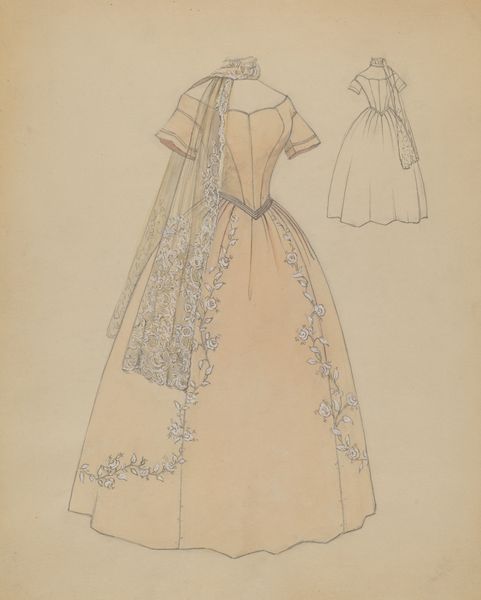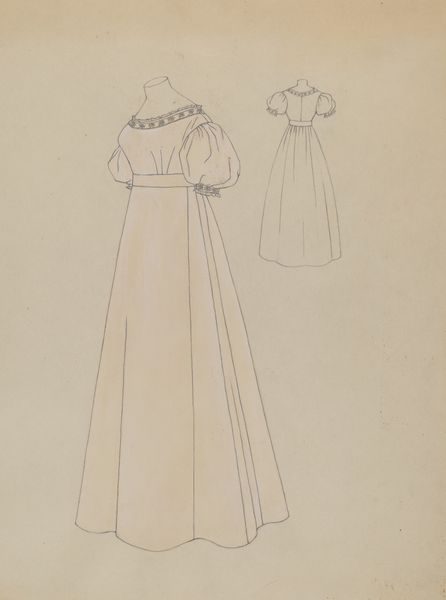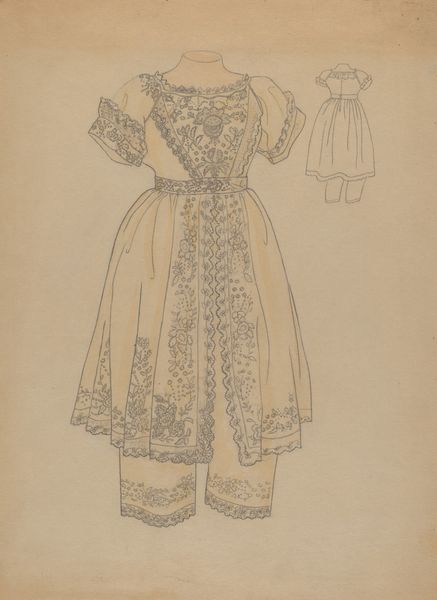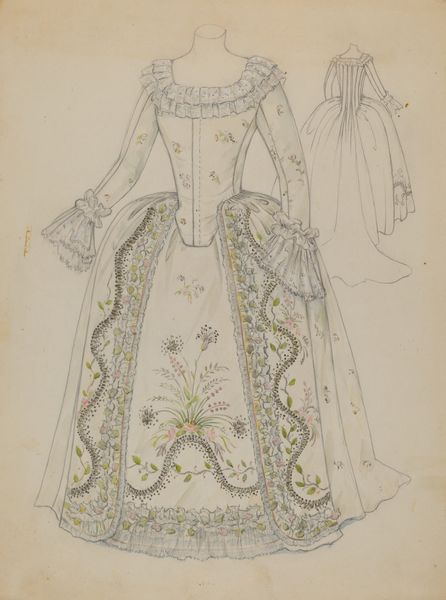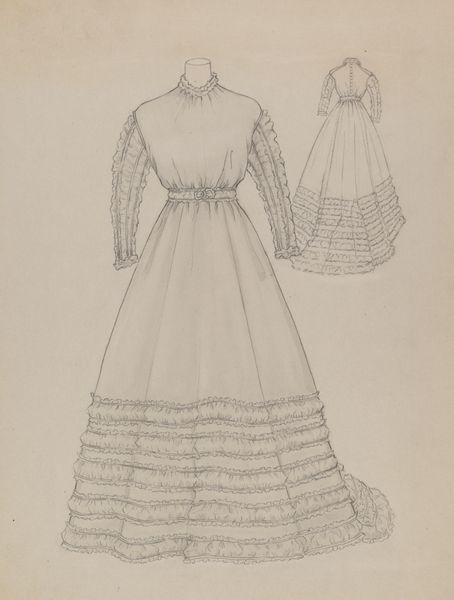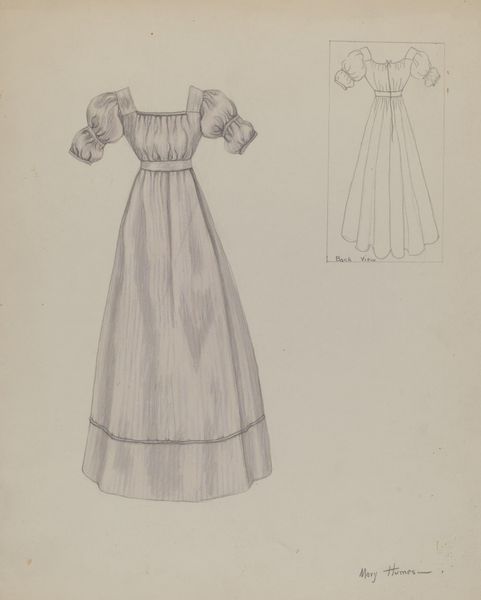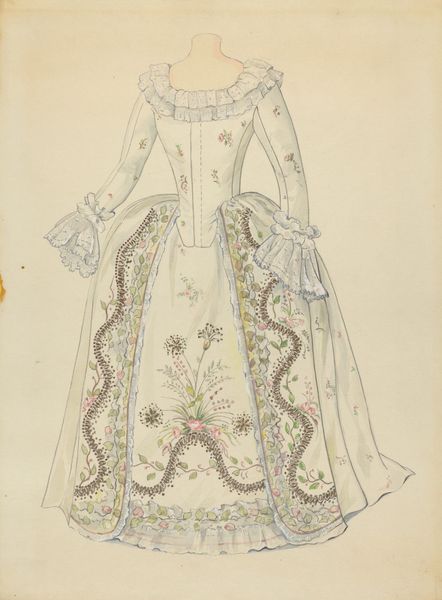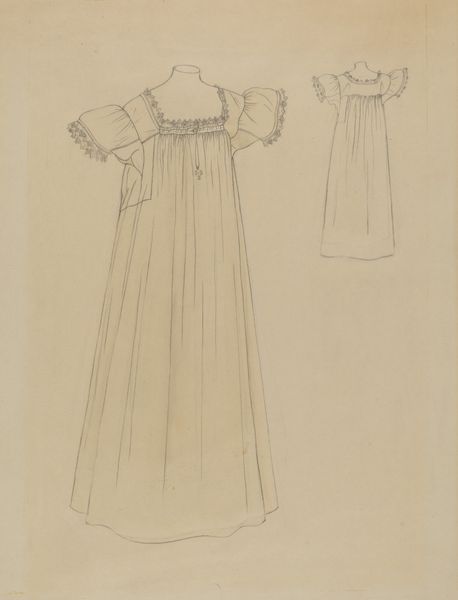
drawing, paper, pencil
#
drawing
#
aged paper
#
light pencil work
#
quirky sketch
#
sketch book
#
figuration
#
paper
#
personal sketchbook
#
idea generation sketch
#
sketchwork
#
pencil
#
sketchbook drawing
#
storyboard and sketchbook work
#
sketchbook art
Dimensions: overall: 28.8 x 22.4 cm (11 5/16 x 8 13/16 in.)
Copyright: National Gallery of Art: CC0 1.0
Curator: Looking at this lovely sketch from between 1935 and 1942 simply titled, "Dress," one immediately senses a ghostly elegance. Editor: Ghostly is right. There's a lightness here, a fragility in the light pencil work on aged paper, isn't there? Like a whisper of a garment. I’m intrigued by the rendering of fabric; the ruffles and lace details contrast the austerity of the Depression era in which this drawing was likely made. Curator: Exactly. Considering the constraints on materials during that time, and potentially even during the war years, it's intriguing to consider why the artist spent time sketching a beautiful dress instead of creating a more practical garment or focusing on the reality of the hardships around them. Was it a form of escapism, an aspiration, or perhaps a professional sketch to generate some work? Editor: Possibly all three. We can examine this sketch through a lens of identity. Who was this dress *for*? Was it aimed at the elite, clinging to a disappearing world of refinement, or perhaps an aspirational image for working-class women dreaming of something beyond their reach? And we must question who the anonymous artist might have been too, as that will no doubt give greater context to the work in consideration. Curator: The details do speak volumes about labor, both the potential labor of its creation and the handwork of embroidery and dressmaking that would be required to realize the garment itself. These crafts, often deemed “women's work,” were significant parts of local economies. This artist carefully notes all this work. It gives this modest drawing weight in consideration of craft, skills, materials, economy and gender. Editor: And considering its context, we must view the image of the dress with a keen awareness of historical and social implications that extend beyond the merely aesthetic. Was there a subversive aspect to it too? It will likely remain open to speculation. It's so poignant knowing so little. Curator: Absolutely. Even within its sketchiness and modesty, this "Dress" invites reflections on labor, material constraints, aspirations, and hidden forms of protest through the artist's quiet defiance in documenting these skills. Editor: A quiet defiance, indeed. "Dress," in its seeming simplicity, unfolds complex questions of desire, identity, and social commentary.
Comments
No comments
Be the first to comment and join the conversation on the ultimate creative platform.




